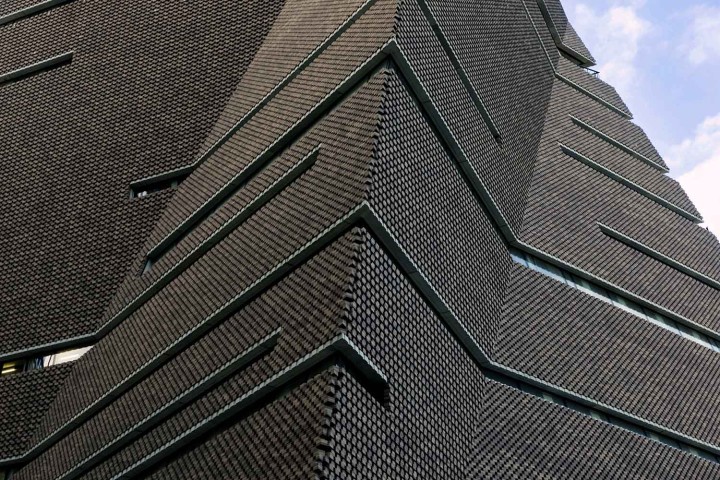London’s Tate Modern can be deemed nothing but an astounding success: only sixteen years old, the museum attracts over five million visitors every year, and has played a crucial part in positioning London among the world’s cultural capitals. After several years of construction, the Bank Side institution presents its extension, realized to share an increasingly international view of modern and contemporary art.
The Switch House rises above the South Bank’s eclectic mix of postmodern skyscrapers and Thatcher-era council estates as an organic outgrowth of Tate’s industrial and almost dystopian main building. If the modern museum was meant to mimic the factory, the postmodern museum aims to present itself as a highly authored architectural icon, and Tate now fulfills both of these. Behind the new abstracted pyramidal tower is Swiss architectural duo Herzog & de Meuron, who also oversaw the original conversion of Tate’s Power Station in 2000.
Inside, three of a total of ten floors are devoted to exhibiting Tate’s permanent collection — performance and event spaces take up the other floors, along with administration offices, a viewing deck, and, naturally, a restaurant, a café and a shop. Elaborating on the recent re-hang of the main building, works are organized under a fresh series of noncanonical themes, a radical curatorial strategy that first made Tate famous in the 2000s.
“Performer and Participant” on the third level covered performance art from every possible angle (from Santiago Sierra to Suzanne Lacy to Marina Abramovic), and “Between Object and Architecture” on the second level was pretty unanimously devoted to minimalism in the 1960s. Avoiding any labyrinth-like exhibition design, the layout of that floor was simply two vast, high-ceiled rooms with works evenly distributed on floor and walls: it offered the free-standing works, like Marisa Merz’s Untitled (Living Sculpture) (1966) or Roni Horn’s ambiguous Pink Tons (2009) the kind of “direct encounter between viewer and object” that was of “primary importance” to the minimalists, as the wall text read. Ironically, Carl Andre’s brick sculpture Equivalent VIII (1966), which caused public outrage when Tate acquired it in 1972, had been aggressively fenced in to shelter it from curious tourists — and upstairs, the living macaws in Hélio Oiticica’s installation Tropicália had been temporarily removed due to high visitor numbers. Perhaps a sign of an internal conflict as the institution balances between critical recognition and status as major tourist attraction.
Tate’s curatorial team, and not to mention its new director Frances Morris, are, compared to other large contemporary institutions around the world, spot on: feminist, postcolonial and queer histories are inserted everywhere, interspersed with intriguing monographic areas like the one dedicated to Louise Bourgeois. London is more than entitled to boast about its new temple of contemporary art.


